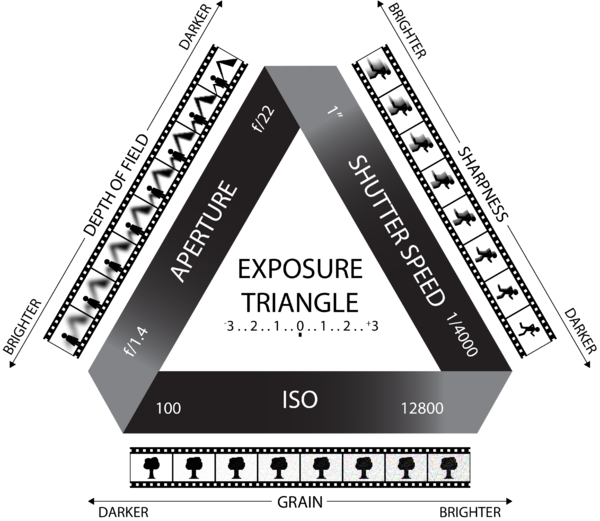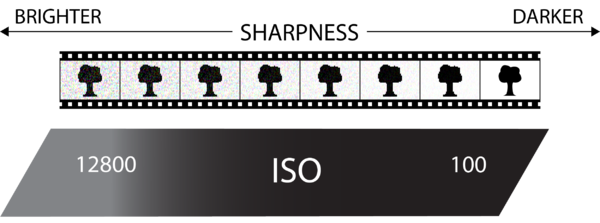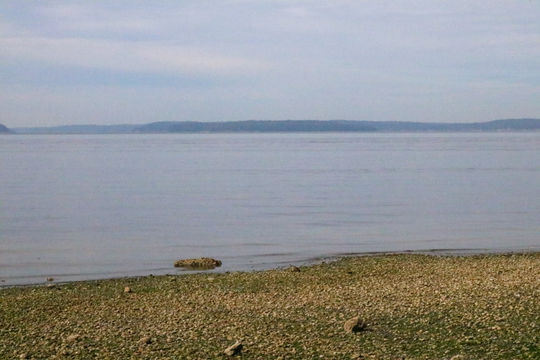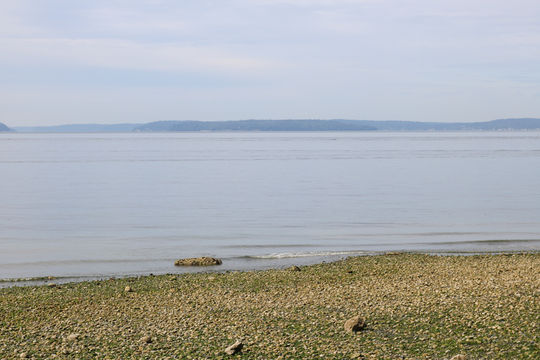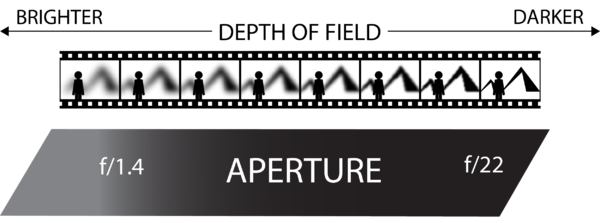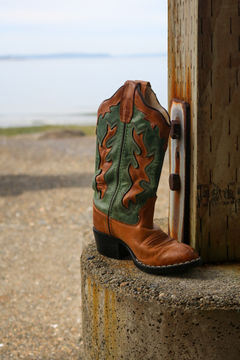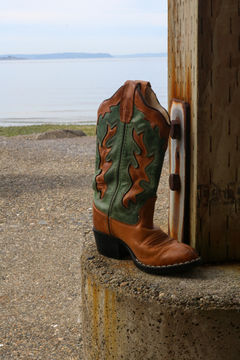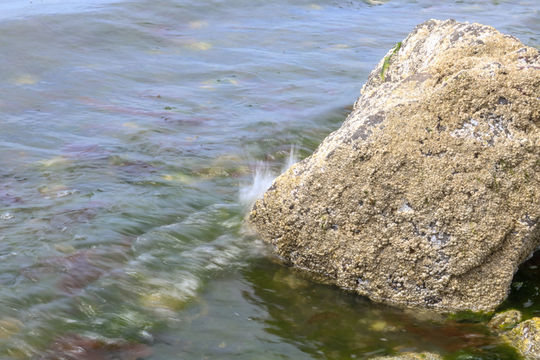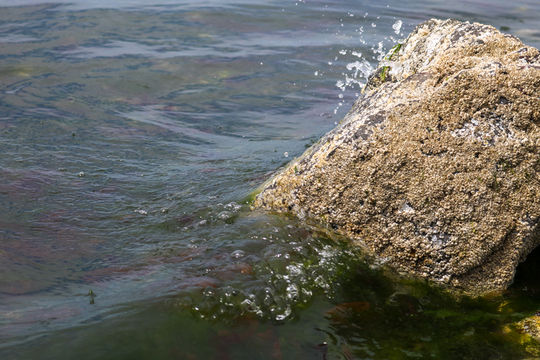Difference between revisions of "Camera Fundamentals"
(Tag: VisualEditor) |
(Tag: VisualEditor) |
||
| Line 34: | Line 34: | ||
</div> | </div> | ||
| − | <!-- Technical note for source editors: Generator=Template:TwoColumn --> | + | <!-- Technical note for source editors: Generator=Template:TwoColumn -->'''Page Overview:''' This page covers the basic topics for getting started with cameras. The information covered will provide the foundation for taking good pictures and videos. The controls and buttons of a camera can be daunting, but this guide will point out the key features to get started with your project. The guide will also point out the most relevant campus resources to each topic.For beginners as well as advanced users, Media Loan's top camera recommendation is the Canon Rebel. See [https://www.evergreen.edu/medialoan/policies Media Loans Policies] for more information on how to checkout gear and other resources. See Photolands website for film development, digital editing and other photo resources. See the Multimedia lab page for information on how to use their computers for video editing as well as many other kinds of media software. |
| − | + | ==Exposure== | |
| − | + | ||
| − | + | ||
| − | =Exposure= | + | |
[[File:Exposure Triangle FINAL.png|alt=Graphic of Exposure Triangle depicting relationship of ISO, shutter speed, and aperture to light exposure for cameras. Original work created by Caelin Eddy.|centre|frameless|The elements of exposure are often displayed as an Exposure Triangle simply to reinforce that there are three elements.|600x600px]] | [[File:Exposure Triangle FINAL.png|alt=Graphic of Exposure Triangle depicting relationship of ISO, shutter speed, and aperture to light exposure for cameras. Original work created by Caelin Eddy.|centre|frameless|The elements of exposure are often displayed as an Exposure Triangle simply to reinforce that there are three elements.|600x600px]] | ||
| − | :Exposure | + | :Exposure results in an overall brighter or darker image. If an image is overexposed it will be blown out and look too white, on the other hand, an underexposed image is too dark. Getting the correct exposure is a balancing act between three controls. These three controls each affect the brightness of the image, but also have a side-effect that can be used to for artistic purposes. These controls are called ISO, aperture, and shutter speed. Photos can look wildly different based on how you adjust these controls. Most phone cameras automatically adjust these controls to result in a well exposed image but you loose the ability to get exactly the kind of image you want. Most digital cameras have the ability to automatically adjust these exposure controls too. However, understanding and adjusting these controls can allow you to take the exact pictures you want, like taking pictures in low light, or having everything is focus, or having no motion blur. |
| + | :If you to prefer to learn from videos, here are a couple on these exposure topics; [https://www.youtube.com/watch?v=q8cj9Lj9w-g ISO], [https://www.youtube.com/watch?v=YojL7UQTVhc&t=2s aperture] and [https://www.youtube.com/watch?v=7R9ZTxoTOSk shutter speed.] To play with a simulation of exposure controls, check out an [http://www.andersenimages.com/tutorials/exposure-simulator/ Exposure Simulator by Anderson Images] or an [http://www.canonoutsideofauto.ca/play/ Exposure Simulator by Canon.] | ||
===ISO=== | ===ISO=== | ||
[[File:ISO.png|centre|frameless|alt=Graphic displaying exposure qualities of ISO. Original work by Caelin Eddy.|ISO allows more sensitive sensors to let the available light to be shown as brighter, but results in a "noisy" image.|600x600px]] | [[File:ISO.png|centre|frameless|alt=Graphic displaying exposure qualities of ISO. Original work by Caelin Eddy.|ISO allows more sensitive sensors to let the available light to be shown as brighter, but results in a "noisy" image.|600x600px]] | ||
| − | :Simply put, ISO is the sensitivity of the material that produces the image. For digital cameras, it is a fancy sensor, and | + | :Simply put, ISO is the sensitivity of the material that produces the image. For digital cameras, it is a fancy digital sensor, and film cameras use sensitive film strips. It seems odd, but both film and digital cameras describe their sensitivity as ISO. The ISO can be 100, 200, 400, 800, 1600, 3200 etc, with higher ISO being more sensitive and resulting in a brighter, more exposed image. Increasing the ISO has a drawback, it adds visual noise. For film, this is called grain and for digital it is seen as little errors in the pixels where the colors are adding randomness. For this reason you usually want to prioritize using lower ISO. You typically only increase ISO if you don't have enough exposure from the other controls. The pictures of the beach below use different ISO's. Click on then to compare the pixel noise added with the ISO of 12800. |
<gallery mode="packed-hover" heights="240px" caption="click to view different ISO pixel noise."> | <gallery mode="packed-hover" heights="240px" caption="click to view different ISO pixel noise."> | ||
File:12800.jpg|ISO 12800 | File:12800.jpg|ISO 12800 | ||
| Line 52: | Line 50: | ||
===Aperture=== | ===Aperture=== | ||
[[File:Aperture_Graphic.png|alt=Graphic displaying exposure qualities of aperture. Original work by Caelin Eddy.|centre|frameless|Aperture affects the depth of field allowing control over how much of image is in focus.|600x600px]] | [[File:Aperture_Graphic.png|alt=Graphic displaying exposure qualities of aperture. Original work by Caelin Eddy.|centre|frameless|Aperture affects the depth of field allowing control over how much of image is in focus.|600x600px]] | ||
| − | :Aperture controls how much light is let through | + | :Aperture is a hole in the lens that controls how much light is let through. Aperture is the hole and the mechanism that widens and narrows that hole is called the iris. Our eyes also have an iris that automatically changes our eyes' aperture, AKA pupil, in response to how much light we see. It is intuitive that a larger hole lets in more light, increasing the exposure and resulting in a brighter image. The aperture is measured in F-stops written like this; f/1.4, f/2, f/2.8, f/4 etc. The lower numbers can be described as more opened or large aperture, whereas a higher number can be described as more closed or small aperture. '''We need to talk about focus in order to understand what aperture does. The focus of an image is a plane parallel to the lens where the image will show up as the clearest, you usually want this to be on the most important part of the image like someone's face. What is out of the focus is seen as blurry. The focus can be moved forward and backward, but more on that in the Lens section below.''' For now, let think about how the focus has a width, this is called the “depth of field”. A wider depth of field allows more parts of the image to be clearer if they are within the focus. The depth of field is controlled by the aperture. Interestingly, the smaller the hole (higher number) is actually a wider depth of field. On the other end, a bigger hole (lower number) is a narrow depth of field. With the images of the boot below; you may want just your picture of a boot to have the boot in focus only and the background blurry so you would want a higher aperture. This also then means that your photo is getting less exposure, so you would need to adjust your other controls like ISO might need to be brought up to increase your overall exposure. |
<gallery mode="packed-hover" heights="240px" caption="click to view different depths of field."> | <gallery mode="packed-hover" heights="240px" caption="click to view different depths of field."> | ||
File:F-5.jpg|f/5 | File:F-5.jpg|f/5 | ||
| Line 60: | Line 58: | ||
===Shutter Speed=== | ===Shutter Speed=== | ||
[[File:Shutter Speed.png|alt=Graphic displaying exposure qualities of shutter speed. Bigger numbers equate to longer exposures resulting in more light and motion blur. Original work by Caelin Eddy.|centre|frameless|Shutter speed creates more motion blur when it lets more light in from longer exposure time.|600x600px]] | [[File:Shutter Speed.png|alt=Graphic displaying exposure qualities of shutter speed. Bigger numbers equate to longer exposures resulting in more light and motion blur. Original work by Caelin Eddy.|centre|frameless|Shutter speed creates more motion blur when it lets more light in from longer exposure time.|600x600px]] | ||
| − | :The last control we have over the exposure is the shutter speed. The shutter is a door that quickly opens and closes to let light in so | + | :The last control we have over the exposure is the shutter speed. The shutter is a door that quickly opens and closes to let light in so the digital sensor or film can be exposed. The time that the shutter is open is the shutter speed. It is measured in units like 1/60 seconds, 1/125 seconds, 1/250 seconds, 1/500 seconds. A slower shutter speed would allow more light in, increasing the exposure, but not capturing movement clearly. While the shutter is open, any movement in the scene going into the camera would be captured as a blur called motion blur. This can often be see and a moving trailing image behind the subject like the above example of a stick figure. While quicker shutter speeds would just capture a snapshot still of the movement rather than blurring of that movement. If you wanted to take a picture of the movement of water, you would need to decide if you want the image to be a sharp representation of a moment, or a blurry representation of what happened over time. |
<gallery mode="packed-hover" heights="240px" caption="click to view motion blur effects of shutter speed."> | <gallery mode="packed-hover" heights="240px" caption="click to view motion blur effects of shutter speed."> | ||
File:1_30.jpg|1/30th of a second | File:1_30.jpg|1/30th of a second | ||
| Line 68: | Line 66: | ||
===Balancing Exposure=== | ===Balancing Exposure=== | ||
| − | :Setting the correct exposure for your photo can enable you to | + | :Setting the correct exposure for your photo can enable you to control if your image has Noise from the ISO, depth of field from aperture and motion blur from shutter speed. For analog there is little automatic function, so you will need to manually choose all of your settings. For most digital cameras, they have a dial on the top right that you use to choose from Modes like P, A, S, M, Auto, Video, etc. This is called the mode dial and can be used to choose if it's in full automatic, aperture priority where you choose aperture and it chooses the other exposure settings. For more on this, look at the mode dial section of the Canon Rebels Operating Guide. |
{| class="wikitable" | {| class="wikitable" | ||
| Line 74: | Line 72: | ||
|- | |- | ||
| − | ! Exposure Element !! Other/Related Names !! Exposure Method !! Effect !! | + | ! Exposure Element !! Other/Related Names !! Exposure Method !! Effect !! Example !! Higher number means... |
|- | |- | ||
| − | | ISO || Film Speed || Sensitivity of | + | | ISO || Film Speed || Sensitivity of digital sensor or film || Grain for Analog, Pixel Noise for Digital || 400 || More exposure and more noise |
|- | |- | ||
| − | | Aperture || Iris, Lens Speed || Size of opening || Depth of field || | + | | Aperture || Iris, Lens Speed, f-stop || Size of opening || Depth of field || f/2.8 || More exposure and less depth of field |
|- | |- | ||
| − | | Shutter Speed || Shutter || Time of exposure || Motion Blur || | + | | Shutter Speed || Shutter || Time of exposure || Motion Blur || 1/250 || Less exposure and less motion blur |
|} | |} | ||
| − | =Lens= | + | ==Lens== |
| + | |||
| + | :Lenses are used to control focus and focal length. These will allow you to choose what part of the image is sharp and in focus as well as how much of the scene is captured in the image. Some cameras have detachable lenses, so you can mount different kinds to them. The Canon Rebel is great because Media Loan has many lenses to choose from. 35mm film cameras also have lenses to choose from. | ||
| + | |||
| + | === Focus === | ||
| + | Focus is what part of the scene is sharp, while the areas infront of and behing the focus plane will be out of focus and blurry. note macro | ||
| − | |||
===Focal length=== | ===Focal length=== | ||
| Line 109: | Line 111: | ||
|} | |} | ||
| + | === Zoom Vs Prime Lens === | ||
| + | Some Lenses can change focal length, while other can't. Zoom Lenses can zoom in on distant objects and zoom out to see the full scene because they have variable focal lengths. On the otherhand, Prime lenses cannot zoom in or out, so they only have one angle of view, because they have fixed focal lengths that can't change how much of the scene you see. Zoom lenses are often described by their range of focal lengths like a 50mm-250mm lens or a 28mm-55mm lens. While Prime Lenses would be described by the one and only focal length they can use like 100mm lens or 35mm lens for example. | ||
| − | + | To play with simulations of different types of lens check out the [https://imaging.nikon.com/lineup/lens/simulator/ Nikon Lens Simulator.] | |
| − | =Digital & | + | ==Digital & Film== |
===Digital Cameras=== | ===Digital Cameras=== | ||
| − | :Digital Cameras have many automatic features available. Automatic exposures, focus, and white balance can be used to make taking pictures quickly easy. These tools although they enable speed, they can limit your artistic expression. There are many kinds for Digital Cameras. The most common are the DSLR, camcorder, and action cameras like the GoPro. DSLR stands for Digital Single Lens Reflex. Media Loans best DSLR for starting out is the | + | :Digital Cameras have many automatic features available. Automatic exposures, focus, and white balance can be used to make taking pictures quickly easy. These tools although they enable speed, they can limit your artistic expression. There are many kinds for Digital Cameras. The most common are the DSLR, camcorder, and action cameras like the GoPro. DSLR stands for Digital Single Lens Reflex. Media Loans best DSLR for starting out is the Canon Rebel. To take a proficiency test to use this Camera, read through the Canon Rebel Operating Guide.] There is also the Go pro. |
| − | :'''Putting on a Computer:''' Image files live on SD cards | + | :'''Putting on a Computer:''' Image and video files live on SD cards inside the camera. You can put them on the computer using a usb cable that comes with camera kits, or by removing the SD and using a card reader, just remember to put it back. |
| − | === | + | ===Film Cameras=== |
:The main different categories of analog cameras are based on the size of film it uses. The smallest is 35mm, while the others are simply called medium format and large format: 35mm in this case refers to the film size and not the focal length. The medium and large format use bigger film sizes, so that images can have incredible resolution. This detail means that the image can be scaled up for large prints. Large format cameras tend to have bellows that look like an accordian. Although these cameras are of an older design, they are still used by professional photographers today. You will most likely want to use a light meter to help get your meter, so check out this [https://helpwiki.evergreen.edu/wiki/index.php/Light_Meters_Quick_Guide light meter guide.] Media Loan offers all of these types of cameras, but the best to start with is a 35mm called the K1000. A proficiency test is required to use this camera, all info is in this [https://helpwiki.evergreen.edu/wiki/index.php/35mm_SLR_Camera_Operating_Guide 35mm operating guide.] | :The main different categories of analog cameras are based on the size of film it uses. The smallest is 35mm, while the others are simply called medium format and large format: 35mm in this case refers to the film size and not the focal length. The medium and large format use bigger film sizes, so that images can have incredible resolution. This detail means that the image can be scaled up for large prints. Large format cameras tend to have bellows that look like an accordian. Although these cameras are of an older design, they are still used by professional photographers today. You will most likely want to use a light meter to help get your meter, so check out this [https://helpwiki.evergreen.edu/wiki/index.php/Light_Meters_Quick_Guide light meter guide.] Media Loan offers all of these types of cameras, but the best to start with is a 35mm called the K1000. A proficiency test is required to use this camera, all info is in this [https://helpwiki.evergreen.edu/wiki/index.php/35mm_SLR_Camera_Operating_Guide 35mm operating guide.] | ||
| − | :'''Film:''' There is black and White | + | :'''Film :''' There is black and White as well as color film. Both types of film have many different types of ISO. |
| − | =Photography= | + | ==Photography== |
| − | + | ||
| − | + | ||
| − | :There are | + | :There are a number of different concepts and attachments that only apply to photography and not video. photoland. canon rebel for digital, 35mm for film |
| + | :'''Bulb mode''': Set your shutter speed so slow that the camera allows you to hold the shutter button (for taking a picture) and just hold it for how long you want the shutter to stay open. | ||
| + | :'''Burst Mode''': | ||
| + | :'''Stop Motion:''' You can also can pictures for stop motion, these pictures can be compiled into a gif or video. | ||
| + | :'''Timelapse:''' | ||
| + | :'''Panorama:''' You can also make professional panoramas, or 360 images using a gigapan panoramic tool for a camera. For all of these projects you will need a photo tripod. | ||
| + | :'''Attachable Flash''': f | ||
| + | :'''Studio Flash Kit''': sf | ||
| + | :'''Backdrop kit:''' f | ||
| + | :'''film development:''' | ||
| + | :'''Digital editing:'''f | ||
| − | =Video= | + | ==Video== |
| − | :Video is just a camera taking pictures at a quick speed and played back in the same order. The same exposure and lense qualities still apply to recording video. Because of the dynamic nature of shooting video, you may want to rely on some of the automatic features of | + | :Video is just a camera taking pictures at a quick speed and played back in the same order. The same exposure and lense qualities still apply to recording video. Because of the dynamic nature of shooting video, you may want to rely on some of the automatic features of digital cameras. There are tons of options when it comes to video making. |
| + | :The Canon Rebels, Vixias and GoPro are good options. You can go handheld, or put in on a stabilizer, to make smoother shots. You can use a tripod, gorillapod (for lower shots), monopod (for light weight productions) or a unique mount called the pocket skater. The pocket skater is a small adjustable mount with wheels. You can change the wheel direction or camera angle and lock it to make smooth curved track movements for indoor use and flat surfaces. All of these digital cameras have their own microphones built into the cameras. You could just use this built in camera, but most of the time, you will benefit from adding a bit of gear. Most cameras have an external input as an ⅛” input (AKA mini, aux, 3.5mm) that some microphones can connect to. The mics can mount to the top like the rode, or they can be clipped to a performers collar. For better audio, you may want to use a separate piece of equipment called a field recorder. Not only do they have better recording quality, but they connect to higher quality cameras. For more information on audio check out the [link doesn't exist yet Audio fundamentals pages] field recorder section. Once you have gathered all your shots, you will likely want to edit your video in the Multimedia Lab (MML). The best choice for editing video is with Adobe Premiere, and then to add graphics and effects use Adobe after effect. You can edit the audio of the video within premier, but for finer touches, you may also want to use Adobe Audition. | ||
| + | :add in stabilizer shots | ||
| − | =Lighting = | + | ==Lighting == |
:Check the link to the [ Lighting Wiki Guide] for information on how to effectively light a scene or subject. Media loan has many lighting kits for both LED and hot lights. | :Check the link to the [ Lighting Wiki Guide] for information on how to effectively light a scene or subject. Media loan has many lighting kits for both LED and hot lights. | ||
| + | :add in lighting examples | ||
| − | =Continue= | + | ==Continue== |
| − | :To continue your skills with cameras, learn different cameras operating guides to take proficiency tests so you can use them. You can also take classes on cameras for photography or video or just media in general. For those classes look in the Media pathways or moving images area. Advance gear in media loans Advanced Production Service (APS) is available for people in specific media classes | + | :To continue your skills with cameras, learn different cameras operating guides to take proficiency tests so you can use them. You can also take classes on cameras for photography or video or just media in general. For those classes look in the Media pathways or moving images area. Advance gear in media loans Advanced Production Service (APS) is available for people in specific media classes. Catalog [[Category:Media Loan Topics]] |
Revision as of 22:13, 22 November 2021
page in progress
Page Overview: This page covers the basic topics for getting started with cameras. The information covered will provide the foundation for taking good pictures and videos. The controls and buttons of a camera can be daunting, but this guide will point out the key features to get started with your project. The guide will also point out the most relevant campus resources to each topic.For beginners as well as advanced users, Media Loan's top camera recommendation is the Canon Rebel. See Media Loans Policies for more information on how to checkout gear and other resources. See Photolands website for film development, digital editing and other photo resources. See the Multimedia lab page for information on how to use their computers for video editing as well as many other kinds of media software.
Exposure
- Exposure results in an overall brighter or darker image. If an image is overexposed it will be blown out and look too white, on the other hand, an underexposed image is too dark. Getting the correct exposure is a balancing act between three controls. These three controls each affect the brightness of the image, but also have a side-effect that can be used to for artistic purposes. These controls are called ISO, aperture, and shutter speed. Photos can look wildly different based on how you adjust these controls. Most phone cameras automatically adjust these controls to result in a well exposed image but you loose the ability to get exactly the kind of image you want. Most digital cameras have the ability to automatically adjust these exposure controls too. However, understanding and adjusting these controls can allow you to take the exact pictures you want, like taking pictures in low light, or having everything is focus, or having no motion blur.
- If you to prefer to learn from videos, here are a couple on these exposure topics; ISO, aperture and shutter speed. To play with a simulation of exposure controls, check out an Exposure Simulator by Anderson Images or an Exposure Simulator by Canon.
ISO
- Simply put, ISO is the sensitivity of the material that produces the image. For digital cameras, it is a fancy digital sensor, and film cameras use sensitive film strips. It seems odd, but both film and digital cameras describe their sensitivity as ISO. The ISO can be 100, 200, 400, 800, 1600, 3200 etc, with higher ISO being more sensitive and resulting in a brighter, more exposed image. Increasing the ISO has a drawback, it adds visual noise. For film, this is called grain and for digital it is seen as little errors in the pixels where the colors are adding randomness. For this reason you usually want to prioritize using lower ISO. You typically only increase ISO if you don't have enough exposure from the other controls. The pictures of the beach below use different ISO's. Click on then to compare the pixel noise added with the ISO of 12800.
- click to view different ISO pixel noise.
Aperture
- Aperture is a hole in the lens that controls how much light is let through. Aperture is the hole and the mechanism that widens and narrows that hole is called the iris. Our eyes also have an iris that automatically changes our eyes' aperture, AKA pupil, in response to how much light we see. It is intuitive that a larger hole lets in more light, increasing the exposure and resulting in a brighter image. The aperture is measured in F-stops written like this; f/1.4, f/2, f/2.8, f/4 etc. The lower numbers can be described as more opened or large aperture, whereas a higher number can be described as more closed or small aperture. We need to talk about focus in order to understand what aperture does. The focus of an image is a plane parallel to the lens where the image will show up as the clearest, you usually want this to be on the most important part of the image like someone's face. What is out of the focus is seen as blurry. The focus can be moved forward and backward, but more on that in the Lens section below. For now, let think about how the focus has a width, this is called the “depth of field”. A wider depth of field allows more parts of the image to be clearer if they are within the focus. The depth of field is controlled by the aperture. Interestingly, the smaller the hole (higher number) is actually a wider depth of field. On the other end, a bigger hole (lower number) is a narrow depth of field. With the images of the boot below; you may want just your picture of a boot to have the boot in focus only and the background blurry so you would want a higher aperture. This also then means that your photo is getting less exposure, so you would need to adjust your other controls like ISO might need to be brought up to increase your overall exposure.
- click to view different depths of field.
Shutter Speed
- The last control we have over the exposure is the shutter speed. The shutter is a door that quickly opens and closes to let light in so the digital sensor or film can be exposed. The time that the shutter is open is the shutter speed. It is measured in units like 1/60 seconds, 1/125 seconds, 1/250 seconds, 1/500 seconds. A slower shutter speed would allow more light in, increasing the exposure, but not capturing movement clearly. While the shutter is open, any movement in the scene going into the camera would be captured as a blur called motion blur. This can often be see and a moving trailing image behind the subject like the above example of a stick figure. While quicker shutter speeds would just capture a snapshot still of the movement rather than blurring of that movement. If you wanted to take a picture of the movement of water, you would need to decide if you want the image to be a sharp representation of a moment, or a blurry representation of what happened over time.
- click to view motion blur effects of shutter speed.
Balancing Exposure
- Setting the correct exposure for your photo can enable you to control if your image has Noise from the ISO, depth of field from aperture and motion blur from shutter speed. For analog there is little automatic function, so you will need to manually choose all of your settings. For most digital cameras, they have a dial on the top right that you use to choose from Modes like P, A, S, M, Auto, Video, etc. This is called the mode dial and can be used to choose if it's in full automatic, aperture priority where you choose aperture and it chooses the other exposure settings. For more on this, look at the mode dial section of the Canon Rebels Operating Guide.
| Exposure Element | Other/Related Names | Exposure Method | Effect | Example | Higher number means... |
|---|---|---|---|---|---|
| ISO | Film Speed | Sensitivity of digital sensor or film | Grain for Analog, Pixel Noise for Digital | 400 | More exposure and more noise |
| Aperture | Iris, Lens Speed, f-stop | Size of opening | Depth of field | f/2.8 | More exposure and less depth of field |
| Shutter Speed | Shutter | Time of exposure | Motion Blur | 1/250 | Less exposure and less motion blur |
Lens
- Lenses are used to control focus and focal length. These will allow you to choose what part of the image is sharp and in focus as well as how much of the scene is captured in the image. Some cameras have detachable lenses, so you can mount different kinds to them. The Canon Rebel is great because Media Loan has many lenses to choose from. 35mm film cameras also have lenses to choose from.
Focus
Focus is what part of the scene is sharp, while the areas infront of and behing the focus plane will be out of focus and blurry. note macro
Focal length
- Focal length is the distance from the lens to the sensitive material. This is measured in millimeters and lenses are often defined by their focal length like 55mm, 100mm 150mm. Focal lengths affect “angle of view”, which is the angle produced by the lens. This angle is dependent on the focal length. The shorter the focal length, the wider the angle of view, which looks like it sees closer and more width. The longer the focal length the narrower the angle of view, which looks farther and narrower. Fish eye is a very wide angle of view because it has a short focal length, and a Telephoto is a very narrow angle of view because of its long focal length. Some cameras have fixed focal lengths; these are called prime, but most have variable focal lengths called zoom. Zoom lenses are shown by a range of numbers like 25-200mm. For a video on these concepts check out this Focal Length video.
| Fish-eye | Wide-Angle | Standard | Telephoto |
|---|---|---|---|
| <24mm | <35mm | 35mm to 70mm | >70mm |
Zoom Vs Prime Lens
Some Lenses can change focal length, while other can't. Zoom Lenses can zoom in on distant objects and zoom out to see the full scene because they have variable focal lengths. On the otherhand, Prime lenses cannot zoom in or out, so they only have one angle of view, because they have fixed focal lengths that can't change how much of the scene you see. Zoom lenses are often described by their range of focal lengths like a 50mm-250mm lens or a 28mm-55mm lens. While Prime Lenses would be described by the one and only focal length they can use like 100mm lens or 35mm lens for example.
To play with simulations of different types of lens check out the Nikon Lens Simulator.
Digital & Film
Digital Cameras
- Digital Cameras have many automatic features available. Automatic exposures, focus, and white balance can be used to make taking pictures quickly easy. These tools although they enable speed, they can limit your artistic expression. There are many kinds for Digital Cameras. The most common are the DSLR, camcorder, and action cameras like the GoPro. DSLR stands for Digital Single Lens Reflex. Media Loans best DSLR for starting out is the Canon Rebel. To take a proficiency test to use this Camera, read through the Canon Rebel Operating Guide.] There is also the Go pro.
- Putting on a Computer: Image and video files live on SD cards inside the camera. You can put them on the computer using a usb cable that comes with camera kits, or by removing the SD and using a card reader, just remember to put it back.
Film Cameras
- The main different categories of analog cameras are based on the size of film it uses. The smallest is 35mm, while the others are simply called medium format and large format: 35mm in this case refers to the film size and not the focal length. The medium and large format use bigger film sizes, so that images can have incredible resolution. This detail means that the image can be scaled up for large prints. Large format cameras tend to have bellows that look like an accordian. Although these cameras are of an older design, they are still used by professional photographers today. You will most likely want to use a light meter to help get your meter, so check out this light meter guide. Media Loan offers all of these types of cameras, but the best to start with is a 35mm called the K1000. A proficiency test is required to use this camera, all info is in this 35mm operating guide.
- Film : There is black and White as well as color film. Both types of film have many different types of ISO.
Photography
- There are a number of different concepts and attachments that only apply to photography and not video. photoland. canon rebel for digital, 35mm for film
- Bulb mode: Set your shutter speed so slow that the camera allows you to hold the shutter button (for taking a picture) and just hold it for how long you want the shutter to stay open.
- Burst Mode:
- Stop Motion: You can also can pictures for stop motion, these pictures can be compiled into a gif or video.
- Timelapse:
- Panorama: You can also make professional panoramas, or 360 images using a gigapan panoramic tool for a camera. For all of these projects you will need a photo tripod.
- Attachable Flash: f
- Studio Flash Kit: sf
- Backdrop kit: f
- film development:
- Digital editing:f
Video
- Video is just a camera taking pictures at a quick speed and played back in the same order. The same exposure and lense qualities still apply to recording video. Because of the dynamic nature of shooting video, you may want to rely on some of the automatic features of digital cameras. There are tons of options when it comes to video making.
- The Canon Rebels, Vixias and GoPro are good options. You can go handheld, or put in on a stabilizer, to make smoother shots. You can use a tripod, gorillapod (for lower shots), monopod (for light weight productions) or a unique mount called the pocket skater. The pocket skater is a small adjustable mount with wheels. You can change the wheel direction or camera angle and lock it to make smooth curved track movements for indoor use and flat surfaces. All of these digital cameras have their own microphones built into the cameras. You could just use this built in camera, but most of the time, you will benefit from adding a bit of gear. Most cameras have an external input as an ⅛” input (AKA mini, aux, 3.5mm) that some microphones can connect to. The mics can mount to the top like the rode, or they can be clipped to a performers collar. For better audio, you may want to use a separate piece of equipment called a field recorder. Not only do they have better recording quality, but they connect to higher quality cameras. For more information on audio check out the [link doesn't exist yet Audio fundamentals pages] field recorder section. Once you have gathered all your shots, you will likely want to edit your video in the Multimedia Lab (MML). The best choice for editing video is with Adobe Premiere, and then to add graphics and effects use Adobe after effect. You can edit the audio of the video within premier, but for finer touches, you may also want to use Adobe Audition.
- add in stabilizer shots
Lighting
- Check the link to the [ Lighting Wiki Guide] for information on how to effectively light a scene or subject. Media loan has many lighting kits for both LED and hot lights.
- add in lighting examples
Continue
- To continue your skills with cameras, learn different cameras operating guides to take proficiency tests so you can use them. You can also take classes on cameras for photography or video or just media in general. For those classes look in the Media pathways or moving images area. Advance gear in media loans Advanced Production Service (APS) is available for people in specific media classes. Catalog



